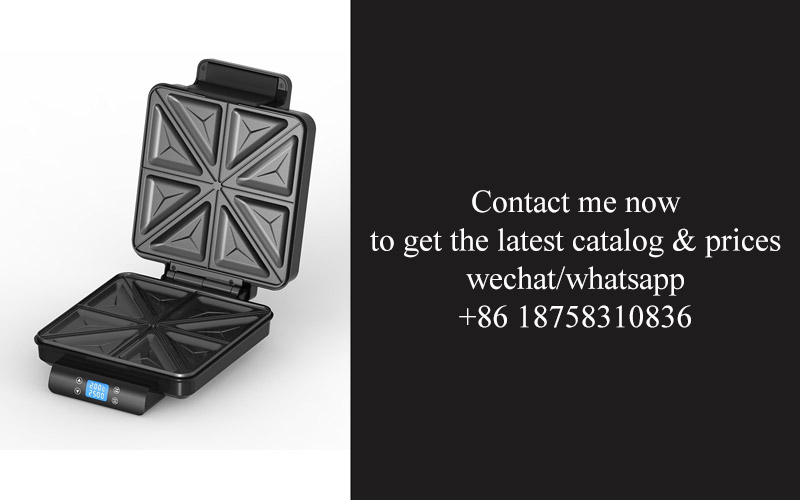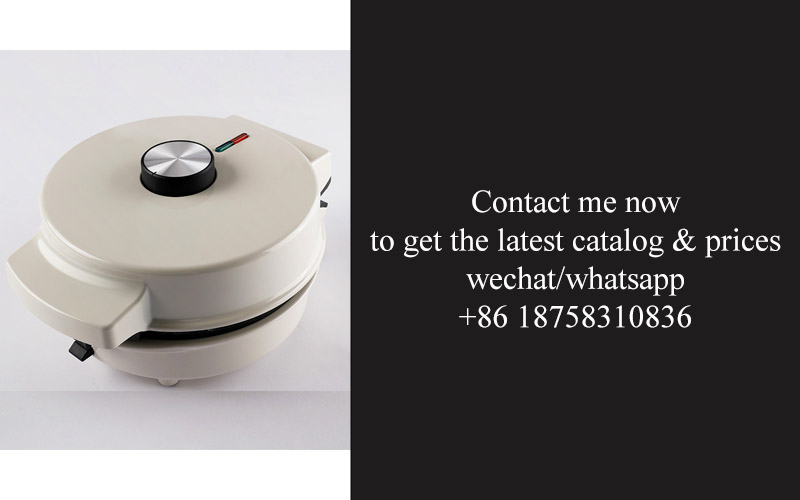Address
304 North Cardinal
St. Dorchester Center, MA 02124
Work Hours
Monday to Friday: 7AM - 7PM
Weekend: 10AM - 5PM
Address
304 North Cardinal
St. Dorchester Center, MA 02124
Work Hours
Monday to Friday: 7AM - 7PM
Weekend: 10AM - 5PM

As the world continues to evolve, so does our living space. The kitchen, once a mere place for cooking and dining, has transformed into a hub of innovation and technology. Smart kitchen technology is not just a trend; it’s a revolution that’s reshaping how we interact with our appliances and prepare meals. In this era of digital transformation, the role of integrated circuit board factories becomes increasingly pivotal in crafting the heartbeat of modern appliances. Let’s delve into the innovative products driving this revolution, the insights shaping the market, and the success stories from the kitchen tech front. We’ll also explore the challenges and opportunities within the integrated circuit board industry and gaze into the potential of advanced circuits shaping our future. Finally, we’ll reflect on the seamless integration of smart kitchen technology, envisioning a world where convenience and efficiency reign supreme.
The smart kitchen revolution has been quietly transforming the way we interact with our homes, and it’s all thanks to the integration of cutting-edge technology. Imagine a kitchen where appliances work in harmony, anticipating your needs before you even realize them. This isn’t just a dream; it’s the reality being shaped by the innovative minds in the integrated circuit board factory sector.
Gone are the days when kitchen appliances were just tools for cooking. Today, they are smart companions, equipped with the intelligence to enhance our daily lives. From the moment you step into the kitchen, the revolution is evident. Smart refrigerators not only keep your food fresh but also suggest recipes based on the ingredients you have. Ovens and stovetops can now be controlled remotely, ensuring your dinner is ready exactly when you walk through the door.
The heart of this transformation lies in the integrated circuit board (ICB) factories. These factories are the silent architects behind the smart kitchen revolution, crafting the tiny yet powerful components that power these appliances. The ICBs are the brains of the operation, enabling the seamless integration of sensors, processors, and communication modules that make smart kitchen technology possible.
In these factories, precision is paramount. Each circuit board is meticulously designed to fit the specific needs of the appliance it will power. Whether it’s a sleek induction cooktop or a futuristic countertop oven, the ICB is the unsung hero that makes it all work. The process is a blend of art and science, requiring a delicate balance of design, engineering, and quality control.
The smart kitchen revolution is not just about convenience; it’s about efficiency and sustainability. Appliances with ICBs are designed to use energy more effectively, reducing waste and lowering utility bills. For instance, smart dishwashers can optimize their cycles based on the load, saving water and detergent. This level of intelligence is not just beneficial for the consumer; it’s a step towards a more sustainable future.
As we delve deeper into this revolution, the market insights become increasingly fascinating. Consumer demand for smart kitchen appliances is skyrocketing, driven by the desire for a connected lifestyle. According to recent market analysis, the global smart kitchen appliance market is expected to grow at a CAGR of 8.5% from 2021 to 2026. This growth is fueled by the integration of AI and IoT technologies, which are making kitchen appliances more intuitive and responsive.
Innovation is the lifeblood of the smart kitchen revolution, and the ICB factories are at the forefront of this innovation. These factories are not just producing circuit boards; they are creating the blueprints for the future of home automation. From voice-activated kitchen helpers to appliances that learn your habits and adjust accordingly, the possibilities are nearly limitless.
One of the most compelling aspects of the smart kitchen revolution is the personalization it offers. With ICBs, appliances can be tailored to individual preferences, making cooking and meal prep a more enjoyable experience. Imagine a coffee machine that knows your preferred strength and temperature, or a microwave that can adjust its cooking time based on the type of food you’re heating.
However, the journey towards the smart kitchen isn’t without its challenges. The rapid pace of technological advancement means that appliances can quickly become outdated. ICB factories must constantly innovate to keep up with the latest trends and consumer demands. Additionally, ensuring the security and privacy of the data collected by these smart appliances is a critical concern that must be addressed.
Looking ahead, the future of the smart kitchen is bright. As ICB factories continue to push the boundaries of what’s possible, we can expect even more sophisticated and user-friendly appliances. The potential for integration with other smart home devices is vast, promising a seamless and interconnected living environment.
In conclusion, the smart kitchen revolution is a testament to human ingenuity and the power of technology. With the support of ICB factories, we are on the cusp of a new era where our kitchens become extensions of our personal tastes and lifestyles. The journey is just beginning, and the possibilities are as limitless as the culinary creations we can imagine.

In the heart of the modern appliance revolution, the role of integrated circuit board (ICB) factories cannot be overstated. These factories are the unsung heroes behind the sleek, intelligent devices that have transformed our kitchens into hubs of convenience and innovation.
ICBs are the brains of these appliances, providing the necessary processing power, connectivity, and control that make smart kitchen gadgets function seamlessly. From the smallest countertop blender to the most advanced oven with a mind of its own, each relies on a meticulously designed ICB.
The precision and complexity of these boards are a testament to the advancements in semiconductor technology. They are not just simple circuit boards; they are mini-computers, packed with microprocessors, memory, and various sensors. These components work in harmony to interpret user inputs, adjust settings, and respond to environmental changes, all in the blink of an eye.
In the realm of refrigerators, ICBs enable features like smart temperature control, energy-efficient cooling, and even the ability to connect to your smartphone for inventory management. For dishwashers, the ICB is responsible for optimizing water usage, detecting soil levels, and adjusting cleaning cycles to the perfect duration and pressure.
The role of ICB factories in the production process is multifaceted. They start with sourcing high-quality materials, such as copper, aluminum, and various semiconductors, which are then carefully processed and integrated onto the board. The assembly process involves precise placement of components, often using automated machinery that ensures accuracy and efficiency.
Quality control is paramount in ICB manufacturing. Each board is subjected to rigorous testing to ensure that it meets the stringent requirements of modern appliances. This includes testing for functionality, durability, and compatibility with various devices. The factories employ advanced techniques like thermal imaging and x-ray inspection to detect any defects before the boards are shipped to appliance manufacturers.
As the demand for smart appliances continues to rise, ICB factories are also at the forefront of innovation. They are constantly pushing the boundaries of what is possible with smaller, more efficient, and more powerful circuits. This includes the development of multi-core processors, low-power consumption technologies, and advanced communication protocols.
The impact of ICB factories on the appliance industry extends beyond just functionality. They are also critical in driving down costs and improving sustainability. By optimizing the design and production of circuits, these factories help manufacturers create more affordable and energy-efficient products. This not only benefits consumers but also contributes to a greener planet.
Moreover, the integration of ICBs into kitchen appliances has opened up new possibilities for user experience. For example, voice-controlled kitchen gadgets, such as smart ovens and ranges, rely heavily on ICBs to process voice commands and execute the corresponding functions. This has led to a more intuitive and hands-free cooking experience.
In the context of connectivity, ICBs are also pivotal in linking kitchen appliances to the Internet of Things (IoT). They enable appliances to communicate with each other, share data, and even provide insights into usage patterns. This interconnectedness not only adds convenience but also allows for predictive maintenance and remote troubleshooting, reducing downtime and ensuring appliances stay in peak condition.
As technology continues to evolve, the role of ICB factories in shaping the future of kitchen appliances is set to grow even more significant. The development of 5G technology, artificial intelligence, and machine learning will further enhance the capabilities of smart kitchen devices. ICB factories will be at the forefront of integrating these cutting-edge technologies into everyday appliances, making our kitchens smarter, more efficient, and more personalized.
In conclusion, while the ICB factory may not be the star of the kitchen appliance show, it is the unsung hero that powers the revolution. Its contribution to the design, production, and functionality of modern kitchen gadgets is invaluable, and its continuous innovation ensures that our kitchens remain at the forefront of technological advancement.

In the heart of the kitchen tech industry, innovative products serve as the pulse, driving the evolution and efficiency of modern culinary experiences. From smart appliances that simplify cooking to devices that enhance food safety and storage, these innovations are reshaping the way we interact with our kitchens.
Revolutionizing Cooking ExperienceSmart cookers and ovens are now equipped with features that not only control temperature and time but also learn from your preferences. Through AI and machine learning, these appliances can adapt their cooking techniques to ensure the perfect meal every time. Integrated circuit boards are at the core of this technological advancement, allowing for precise control and real-time data processing.
Personalized and Health-Conscious CookingWith an increasing awareness of health and nutrition, the industry has responded with appliances that cater to personalized diet plans. Smart fridges, for instance, can be programmed to remind you of meal prep times or suggest recipes based on the ingredients you have. The integration of microcontrollers in these fridges ensures that the information is not only accurate but also easily accessible to the user.
Smart Kitchen Gadgets for EfficiencyGadgets like smart blenders and coffee makers have transcended their traditional functions. They now connect to your smartphone, allowing for remote control and programmable settings. Integrated circuits play a crucial role in the seamless connectivity, enabling these gadgets to communicate with your home automation system and provide a more integrated cooking experience.
Food Storage and Safety InnovationsInnovations in integrated circuit technology have also led to advancements in food storage and safety. Smart refrigerators with built-in sensors can detect spoilage and alert you before your food goes bad. These sensors rely on complex circuitry to analyze the freshness of produce and dairy, ensuring that your groceries stay at their peak quality.
Interactive Kitchens with Voice AssistantsThe rise of voice-activated assistants has made its way into the kitchen tech scene. Integrated circuit boards power these smart speakers, enabling them to understand and respond to voice commands for a variety of cooking-related tasks. Whether it’s setting timers or reading recipes aloud, these devices are a testament to the convergence of technology and daily life.
Customization Through Apps and SoftwareThe kitchen tech industry is no longer limited to physical appliances. With the advent of apps and software, users can customize their kitchen experiences. From customizing settings on smart appliances to downloading new features through software updates, integrated circuits are integral to the seamless integration of these digital solutions.
Environmental Sustainability with Smart FeaturesSustainability is a growing concern, and the kitchen tech industry is not exempt. Appliances now come with energy-saving modes and smart features that reduce waste. The circuitry within these devices is designed to optimize energy use, ensuring that they not only save you money but also have a smaller carbon footprint.
The Future of Cooking AidsLooking ahead, the kitchen tech industry is on the brink of even more groundbreaking innovations. The integration of advanced integrated circuits will allow for appliances that not only cook but also learn and adapt to the user’s cooking style and preferences over time. This future is not just about convenience; it’s about creating a cooking environment that is as intuitive as it is efficient.
The Human Element in InnovationWhile the integration of integrated circuits in kitchen appliances is a technological marvel, it’s important to remember the human element behind these innovations. The desire to make cooking more enjoyable, efficient, and accessible drives the relentless pursuit of innovation. The kitchen tech industry is not just about technology; it’s about enhancing human life through smart and thoughtful product design.
The Heartbeat of Innovation ContinuesAs the kitchen tech industry continues to evolve, the role of integrated circuit boards will only grow in significance. These tiny pieces of technology are the heartbeat of innovation, propelling us into a future where our kitchens are more connected, efficient, and tailored to our personal needs. The potential is vast, and the journey of innovation in kitchen tech is far from over.

In the ever-evolving landscape of kitchen technology, staying ahead of the curve is crucial. Market insights and trend analysis play a pivotal role in guiding the direction of innovation within the industry. Here’s a glimpse into the current trends shaping the kitchen tech market:
Smart Integration: The integration of smart technology into kitchen appliances has become a norm. From refrigerators that can track your grocery list to ovens that can be controlled via a smartphone app, the ability to connect and communicate is driving consumer demand.
Energy Efficiency: With growing environmental concerns, energy-efficient appliances are not just a trend but a necessity. Consumers are increasingly looking for kitchen tech that offers both convenience and sustainability, leading to a surge in products with energy-saving features.
Voice Control and AI: The rise of voice assistants like Amazon’s Alexa and Google Assistant has opened up new avenues for kitchen tech. Voice-activated appliances are becoming more sophisticated, allowing users to control their kitchen devices with simple voice commands, making cooking and cleaning more hands-free.
Health and Wellness: Kitchen appliances are now not just about cooking but also about promoting health and wellness. From smart blenders that can measure nutritional content to cookware that reduces the need for added fats, there’s a growing market for products that cater to health-conscious consumers.
Customization and Personalization: The kitchen tech industry is moving towards more personalized experiences. Smart appliances that learn your preferences and adjust settings accordingly are becoming more popular, offering a level of convenience and comfort that was once unimaginable.
Subscription Models: The subscription economy is making its mark in the kitchen tech sector. Companies are offering monthly or annual subscription services that provide regular updates and maintenance for their appliances, reducing the cost of ownership and ensuring that consumers always have the latest technology.
Smart Cooking Systems: The next generation of kitchen appliances is not just single-function devices but interconnected systems that work together to streamline the cooking process. From smart ovens that can be integrated with your refrigerator to provide meal suggestions to induction cooktops that adjust heat levels based on the pot size, these systems are designed to make cooking easier and more efficient.
Sustainability and Eco-Friendly Materials: As awareness of environmental issues grows, there’s a shift towards using sustainable materials in kitchen appliances. Recycled plastics, bio-based materials, and energy-efficient designs are becoming more common, reflecting a broader commitment to sustainability.
Urbanization and Compact Living: With the increasing trend of urbanization and compact living spaces, there’s a demand for kitchen appliances that are space-saving and multi-functional. Mini-fridges, countertop ovens, and compact dishwashers are becoming popular choices for those with limited space.
Globalization and Cultural Influence: The kitchen tech industry is becoming more global, with products and trends from different cultures influencing the market. From the popularity of sous-vide cooking in Europe to the rise of Korean-style air fryers in the US, these cultural exchanges are shaping the direction of kitchen tech innovation.
Cybersecurity: As kitchen appliances become more connected, cybersecurity becomes a critical concern. Manufacturers are focusing on developing robust security features to protect users’ data and ensure the safety of their appliances from potential cyber threats.
The kitchen tech industry is a dynamic field, with constant innovation and evolution. By keeping a close eye on market insights and trend analysis, companies can stay relevant and continue to provide cutting-edge solutions that meet the changing needs of consumers.

In the ever-evolving landscape of kitchen technology, there are numerous success stories that showcase the ingenuity and innovation driving the industry forward. Let’s delve into a few of these tales, highlighting the triumphs of companies at the forefront of kitchen tech advancements.
The story of KitchenGenius begins with a simple observation: many modern kitchens lack space, yet they are brimming with appliances. This sparked the idea for a compact, multifunctional appliance that could replace several single-purpose devices. The team at KitchenGenius spent years perfecting their integrated circuit board, ensuring that the appliance could handle complex tasks with precision and efficiency. The result? A sleek, space-saving marvel that has become a staple in high-end kitchens worldwide.
Another standout success is the SmartCook oven, developed by Culinary Innovations. This oven stands out not just for its sleek design but also for its AI-driven cooking capabilities. The integrated circuit board at the heart of the SmartCook analyzes ingredients, cooking times, and desired outcomes to deliver perfect results every time. Customers rave about the consistency and ease of use, making the SmartCook a must-have for tech-savvy chefs and home cooks alike.
The SmartSink from CleanTech is a prime example of how technology can revolutionize daily tasks. This sink is equipped with an integrated circuit board that not only handles the typical cleaning functions but also offers a range of innovative features like water purification, temperature control, and even a built-in juicer. The success of the SmartSink is a testament to the brand’s commitment to sustainability and the integration of eco-friendly technology into everyday appliances.
In the realm of kitchen appliances, the MiniMixer from MixTech has made a significant impact. This compact, high-powered blender was designed for those who want to enjoy healthy smoothies and cocktails without the need for a bulky appliance. The integrated circuit board allows for precise control over the blending process, ensuring smooth, creamy textures with minimal effort. MixTech’s approach to blending technology has resonated with consumers looking for convenience and performance in a small package.
The story of the SmartFridge from CoolTech is one of continuous improvement. Initially released with basic smart features, the SmartFridge has since been upgraded with an advanced integrated circuit board that offers predictive maintenance, personalized shopping lists, and even the ability to control the fridge remotely. The success of the SmartFridge lies in its ability to adapt to the changing needs of consumers, providing them with a fridge that is as smart as it is functional.
The EcoKettle from HeatTech is a prime example of how simplicity can lead to innovation. This sleek kettle is designed to heat water quickly and efficiently, with an integrated circuit board that optimizes the heating process. The EcoKettle has become a favorite among eco-conscious consumers who appreciate its energy-saving capabilities and stylish design. Its success is a clear indication that sustainability can be a powerful selling point in the kitchen tech market.
The SmartPlate from PlateTech is a game-changer for those looking to maintain a healthy diet. This innovative plate features an integrated circuit board that analyzes the nutritional content of food, providing real-time feedback to the user. The SmartPlate has helped countless individuals make more informed eating decisions, and its success is a reflection of the growing demand for health and wellness in the kitchen tech industry.
Each of these case studies highlights a different aspect of the kitchen tech industry, from compact and multifunctional appliances to smart devices that integrate seamlessly into daily life. They illustrate the power of innovation and the importance of staying ahead of trends to meet the evolving needs of consumers. As the kitchen tech industry continues to grow, these success stories serve as inspiration for the next wave of groundbreaking products.

In the ever-evolving landscape of the integrated circuit board (ICB) industry, challenges and opportunities coexist, shaping the future of technology and innovation. Navigating these complexities requires a keen understanding of the market dynamics and the strategic adaptations that can lead to success.
The demand for miniaturization and higher efficiency continues to rise, pushing manufacturers to innovate and refine their processes. As devices become more compact and powerful, the precision required in ICB production is unparalleled. This demand has sparked a wave of technological advancements, from the development of advanced lithography techniques to the use of high-performance materials that can withstand intense heat and electrical currents.
Environmental concerns have also emerged as a significant challenge. The ICB industry, like many others, faces the pressure to reduce its carbon footprint and embrace sustainable practices. This shift is not just about minimizing waste; it’s about integrating eco-friendly materials and energy-efficient manufacturing processes. Companies that can successfully transition to greener technologies may find themselves at the forefront of a new market segment focused on sustainability.
The rapid pace of technological advancements can be both a challenge and an opportunity. On one hand, it requires continuous investment in research and development to stay ahead of the curve. On the other hand, it opens doors to new applications and markets that were previously unimaginable. For instance, the integration of AI and IoT into ICBs has paved the way for smart devices that can learn, adapt, and interact with their environment in real-time.
Innovation isn’t just about creating new products; it’s also about finding innovative solutions to age-old problems. Take, for example, the issue of electromagnetic interference (EMI). As devices become more complex, managing EMI has become crucial to ensure reliable performance. ICB manufacturers are now exploring advanced shielding techniques and material improvements to mitigate EMI, which not only enhances the user experience but also extends the lifespan of electronic devices.
The global supply chain is another area where the ICB industry faces both challenges and opportunities. As trade policies fluctuate and geopolitical tensions rise, supply chain disruptions can occur, impacting production timelines and costs. However, these disruptions also serve as a catalyst for companies to invest in diversification and localization, ensuring they have backup options in place. Companies that can effectively manage their supply chains and adapt to changes will be better positioned to seize new market opportunities.
Security is a growing concern in the ICB industry. With the increasing use of ICBs in critical infrastructure, such as healthcare and transportation, ensuring the security of these devices has become paramount. This necessitates the development of robust cybersecurity measures and the implementation of secure-by-design principles. Companies that prioritize security will not only protect their products but also gain a competitive edge in a market where trust is crucial.
The rise of the gig economy has also introduced new opportunities for the ICB industry. By leveraging the gig economy, companies can tap into a flexible workforce that can quickly scale up or down based on demand. This approach allows for more agile operations and can lead to cost savings. However, it also brings challenges, such as ensuring compliance with labor laws and maintaining quality control over a distributed workforce.
As the ICB industry continues to evolve, the importance of collaboration cannot be overstated. Partnerships between manufacturers, researchers, and even end-users are crucial for driving innovation and addressing complex challenges. For instance, collaborative efforts between ICB producers and software developers can lead to the creation of integrated solutions that offer unparalleled functionality and user experience.
In conclusion, the ICB industry is brimming with opportunities, but it’s not without its share of challenges. The key to navigating this landscape lies in a commitment to innovation, a focus on sustainability, and the ability to adapt to a rapidly changing world. By embracing these principles, companies can not only overcome obstacles but also capitalize on the immense potential that lies ahead.

In the ever-evolving landscape of technology, the future of integrated circuits (ICs) holds immense potential. As we delve into the realm of advanced circuits, several factors come into play, shaping the trajectory of innovation and efficiency. Here’s a glimpse into the possibilities that lie ahead.
The miniaturization of circuits continues to push the boundaries of what’s possible. As transistors shrink, the complexity of ICs increases, leading to more powerful and energy-efficient devices. This trend is not just confined to consumer electronics but extends to industrial applications as well. Imagine a world where a single, compact circuit can manage the operations of a factory, significantly reducing the need for multiple components and enhancing reliability.
Energy efficiency is a cornerstone of modern technology. Advanced circuits are designed with this in mind, leveraging cutting-edge materials and manufacturing processes to minimize power consumption. This shift is crucial for the development of sustainable technologies, such as renewable energy systems and smart grids. As the demand for energy-efficient solutions grows, so does the importance of ICs that can optimize power usage without compromising performance.
The integration of artificial intelligence (AI) and machine learning (ML) into circuits is another game-changer. These technologies are not just enhancing the capabilities of existing devices but are also paving the way for entirely new categories of products. Think of smart appliances that can learn your habits and adjust their settings accordingly, or IoT devices that can predict maintenance needs before they become critical issues. The potential for personalized and predictive technology is vast, and it all hinges on the sophistication of the circuits that power these innovations.
Security is a paramount concern in the digital age, and advanced circuits are at the forefront of addressing this challenge. With the rise of cyber threats, the need for robust and secure ICs has never been greater. The development of quantum-resistant encryption and secure element ICs is a testament to the industry’s commitment to safeguarding data. As we move towards a more connected world, the security of these circuits will be the backbone of trust and privacy.
The Internet of Things (IoT) is expanding at an unprecedented rate, and advanced circuits are essential to its growth. From smart homes to smart cities, the number of devices connected to the internet is skyrocketing. These devices rely on ICs that can handle vast amounts of data, communicate over various networks, and perform complex tasks with minimal power. The scalability and adaptability of these circuits will determine how well the IoT can integrate into our daily lives.
The healthcare industry is also benefiting from the advancements in circuit technology. Implantable devices, wearable tech, and medical imaging equipment all rely on highly sophisticated circuits. These circuits are not only making treatments more precise but are also improving patient outcomes by providing real-time monitoring and data analysis. The potential for these technologies to revolutionize healthcare is immense, and the future looks promising.
Environmental considerations are increasingly influencing the design and production of circuits. As awareness of sustainability grows, manufacturers are exploring eco-friendly materials and processes. The development of recyclable and biodegradable circuits is not just a matter of corporate responsibility; it’s a necessity for a greener future. The industry is also focusing on reducing the carbon footprint of its operations, from sourcing raw materials to manufacturing and disposal.
The global market for advanced circuits is experiencing rapid growth, driven by emerging markets and the continuous demand for technological upgrades. As economies develop, so does the need for more advanced and reliable electronics. This growth presents both challenges and opportunities. On one hand, it requires the industry to scale up production and meet stringent quality standards. On the other hand, it opens doors for innovation and collaboration, as companies strive to stay ahead of the curve.
The potential of advanced circuits is not just limited to technological advancements; it extends to economic and social impacts as well. As these circuits become more integrated into everyday life, they have the power to transform industries, create new job opportunities, and improve the quality of life. The future of advanced circuits is not just about innovation; it’s about creating a sustainable and connected world.
In conclusion, the potential of advanced circuits is vast and multifaceted. From energy efficiency and security to AI integration and environmental sustainability, the future looks bright for those who are at the forefront of this technological revolution. As we continue to push the limits of what’s possible, the possibilities for advanced circuits are virtually limitless.

In the ever-evolving landscape of smart kitchen technology, the integration of advanced circuits is not just a trend—it’s a cornerstone of innovation. These circuits are the unseen heroes, powering the seamless operation of appliances that promise convenience, efficiency, and a touch of sophistication. Let’s delve into the potential of these advanced circuits, exploring how they shape the future of our culinary experiences.
The miniaturization of electronics has allowed for the creation of circuits that are both compact and powerful. This miniaturization has paved the way for a new generation of kitchen gadgets that can be integrated into everyday appliances. Think of smart ovens with AI-driven cooking modes, or refrigerators that can predict your dietary needs based on your shopping habits. The potential is vast, and the possibilities are limited only by our imagination and technological prowess.
Energy efficiency is another key aspect where advanced circuits are making a significant impact. With the growing concern for sustainability, circuits that consume less power while delivering optimal performance are becoming more crucial. These circuits enable appliances to operate with minimal energy, reducing both costs and environmental footprint. From energy-saving LED lighting to smart sensors that adjust to cooking needs, the integration of efficient circuits is reshaping the kitchen into an eco-friendly space.
The integration of IoT (Internet of Things) technology is another game-changer. Advanced circuits enable kitchen appliances to connect and communicate with each other, creating a cohesive ecosystem that simplifies the cooking process. Imagine a scenario where your smart stove adjusts its temperature based on the ingredients you’ve added to your smart fridge, which in turn suggests a recipe based on your dietary preferences. The synergy between these devices is made possible by the intricate web of circuits that facilitate seamless data transfer and real-time adjustments.
Security is a paramount concern in the digital age, and advanced circuits are at the forefront of addressing this issue. With the increasing number of connected devices in the kitchen, ensuring the safety of data and privacy is essential. Circuitry that incorporates robust encryption and authentication protocols is becoming standard, protecting users from potential cyber threats. As we move towards a world where kitchen appliances are part of a larger network, the security features embedded in these circuits will be the guardians of our digital kitchens.
The customization of kitchen appliances is also being driven by advanced circuitry. Users now have the ability to tailor their appliances to their specific needs, thanks to customizable software that can be updated over the internet. Whether it’s adjusting the settings of a blender to accommodate a specific recipe or programming a coffee machine to start brewing at a specific time, the personalization options are endless. This level of customization is not just convenient; it also fosters a deeper connection between the user and their kitchen technology.
As we look ahead, the potential of advanced circuits in the kitchen tech industry is immense. The rise of 5G technology promises even faster and more reliable connectivity, which will further enhance the capabilities of smart kitchen appliances. Imagine a kitchen where your smart oven can receive real-time updates from your local farmer’s market, alerting you to the freshest ingredients available. The integration of 5G with advanced circuits could revolutionize how we interact with our kitchen technology.
The rise of AI and machine learning is also poised to transform the kitchen tech industry. Circuits that can process and analyze data at unprecedented speeds will enable appliances to learn from our habits and preferences. A fridge that can suggest healthy meal options based on your nutritional needs, or a countertop oven that can predict the perfect cooking time for a new recipe—it’s not just a possibility; it’s the future.
In conclusion, the potential of advanced circuits in shaping the future of smart kitchen technology is undeniable. As we continue to push the boundaries of what’s possible, the kitchen will evolve into a space that is not just a place for cooking but also a hub of innovation and personalization. The seamless integration of advanced circuits will ensure that our kitchens not only keep pace with technological advancements but also lead the way in creating a more connected and efficient culinary experience.